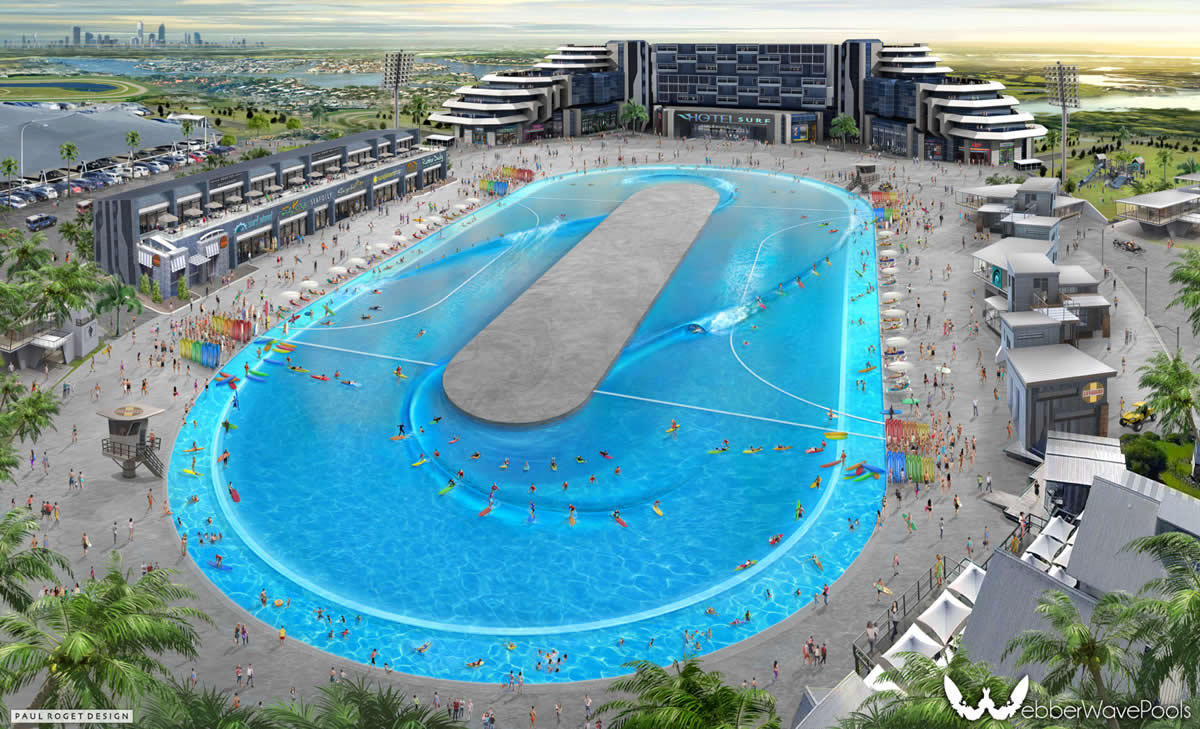How the Webber Wave Pool system works

Greg Webber’s fertile mind has been spitting out wave pool and artificial reef concepts for years. His latest is a system on a looped steel rail track fitted with wheeled carriages. “Like a carriage on an urban monorail system,” he says. Wave-making hulls are attached to the wheeled carriages which are driven by electric motors. All of it controlled by hydraulic actuators – those piston-looking things mounted on heavy equipment scoops and blades. The controlling of the carriages helps adjust the wave height, angle, etc.
Still with us? Good. Software controls the speed and the draft and the angle of each hull. Small changes in these three elements result in immediate changes to the wave size and shape. The takeaway? Instead of a fixed plow lumbering down a track pushing out a straight wave, Webber’s wave maker travels along an oval track and has room for several minute adjustments. The system works in conjunction with a current maker which uses a super-secret method of mitigating unwanted currents while also directing them to enhance the waves. The wave pool will produce a 25-second ride with waves in the 5-to-6-foot range with the capability to go up to 7-to-8-feet and producing 120-180 waves per hour. After nearly 20 years of hearing about Webber Wave Pools, Coral Springs Florida is on the map as the first place to develop Webber’s system.
Related Coverage
